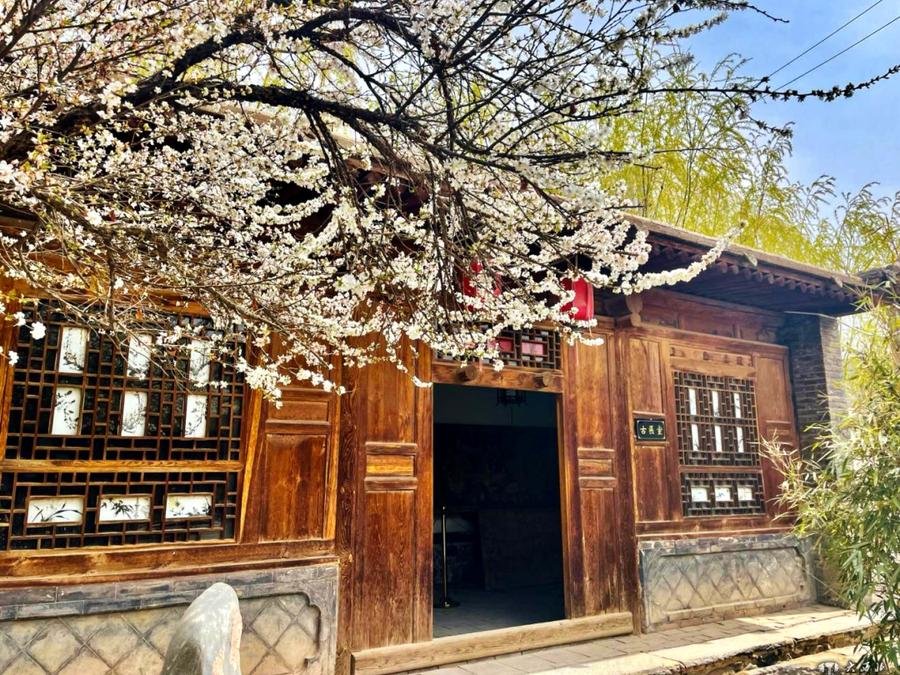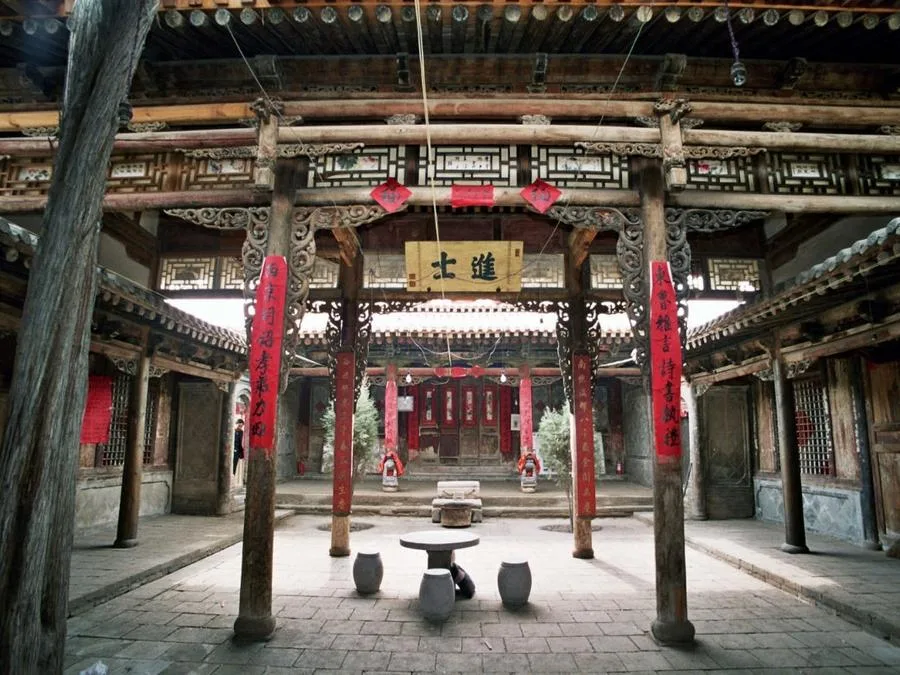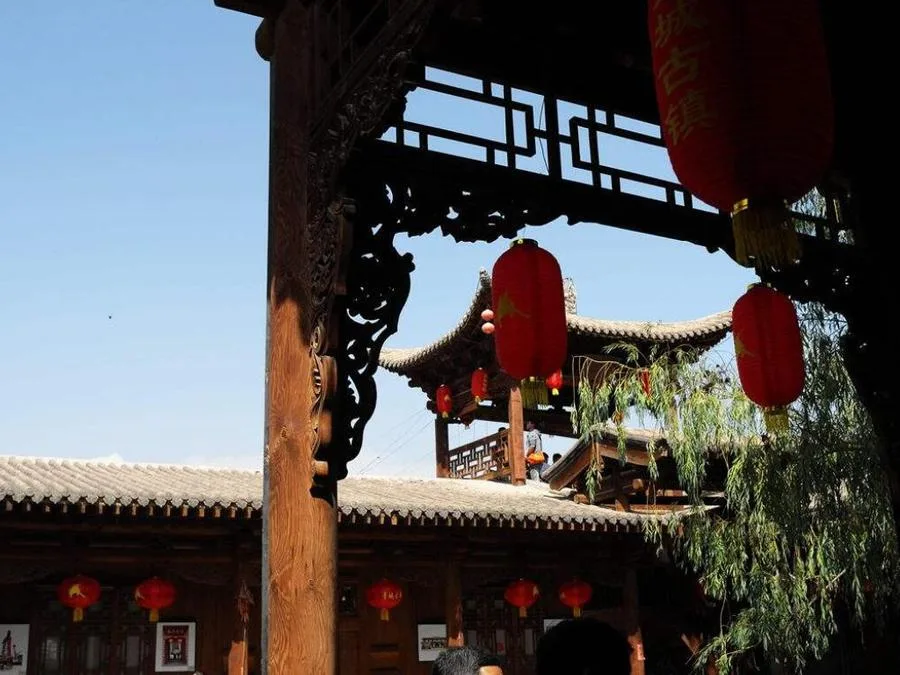Qingcheng Ancient Town (青城古镇), located on the southern bank of the Yellow River at the northern tip of Yuzhong County, is celebrated as a historical and cultural landmark in China and a hub of folk arts and culture. It stands out in Gansu Province for its well-preserved ancient residences, reflecting a blend of architectural styles from different historical periods.
Historically, Qingcheng was a bustling center for the trade of goods transported via water. Its strategic location facilitated prosperous trade routes, attracting merchants from distant places like Beijing, Tianjin, and Taiyuan. This cultural exchange enriched the architectural styles of Qingcheng’s ancient homes, combining elements of Shanxi’s grand courtyard architecture with the layout of traditional Beijing quadrangles. These residences hold significant historical and aesthetic value.
The majority of these ancient houses date back to the Kangxi, Qianlong, Jiaqing, and Daoguang periods of the Qing Dynasty, scattered across three villages: Chenghe, Qingcheng, and Xinmin. Among them, there are 1 Ming Dynasty building, 33 Qing Dynasty buildings, and 15 buildings from the Republic of China era. Notably, there are 12 well-preserved quadrangle courtyards, 18 relatively intact ones, and 14 with some damage. Additionally, 16 gatehouses stand as remnants of the past.
The artistic craftsmanship of these ancient residences is remarkable, with exquisite brick and wood carvings adorning everything from gateways and screen walls to halls, verandas, door panels, and windows. These intricate designs often incorporate symbolic motifs and artistic expressions through methods such as pictograms, ideograms, and phonetic symbolism, adding layers of cultural and artistic significance to Qingcheng Ancient Town.
Table of Contents
- Basic Information
- Location and Transportation
- Highlights of Qingcheng Ancient Town
- Other Attractions in Lanzhou Suburbs
Basic Information
| Estimated Length of Tour | 2 hours |
| Ticket Price | 30 RMB |
| Opening Hours | 9.00 – 17.30 |
| Telephone Number | 0086-0931-5682688 |
Location and Transportation
Qingcheng Ancient Town is situated on the southern bank of the Yellow River, at the northernmost tip of Yuzhong County, Lanzhou City, Gansu Province. To get to Qingcheng Ancient Town, you can take direct shuttle buses from Yuzhong County Bus Station or the high-speed railway station. The journey takes approximately one hour.
Highlights of Qingcheng Ancient Town
Gao Family Ancestral Hall

The Gao Family Ancestral Hall, established in the 50th year of the Qianlong Emperor’s reign (1785 AD), spans 2000 square meters of land with a building area of 400 square meters. This traditional quadrangle courtyard comprises over 20 chambers, including halls and corridors adorned with historical inscriptions. Notably, it proudly displays plaques granted by Emperor Daoguang, praising Gao Minggui for his dual talents in both civil and military affairs, and Gao Hongru for achieving the scholarly rank of Jinshi during the Xianfeng Emperor’s reign. Designated as a provincial-level cultural relic protection unit in 2003, the Gao Family Ancestral Hall stands as a testament to Qingcheng’s rich heritage.
Qingcheng Academy

Qingcheng Academy, founded in the 11th year of the Daoguang Emperor’s reign (1831 AD), has nurtured numerous scholars over its century-long history. It produced one Hanlin scholar, ten Jinshi (advanced scholars), 23 Wenju (civil examination scholars), over 50 Wujuren (military examination scholars), and many Gongsheng (scholarship candidates). As one of the six major academies in Lanzhou, Qingcheng Academy played a pivotal role in educating and cultivating talents who contributed significantly to the cultural and intellectual fabric of the region.
Qingcheng City God Temple

Qingcheng City God Temple, originally the council hall of Di Qing, the Qinzhou Prefect, also known as “Di Qing Mansion,” dates back to the reign of Emperor Renzong of Song (1038-1039 AD). During the Ming Dynasty in the 25th year of Emperor Wanli’s reign (1597 AD), it was converted into a defense office, serving as the command center for the city’s defense forces. In the second year of the Yongzheng Emperor’s reign in the Qing Dynasty (1724 AD), it was renovated and transformed into the City God Temple. Covering an area of 1000 square meters, the main hall of the temple remains well-preserved. Subsequently, funds were raised for the restoration of the gate tower and opera stage, turning it into a cultural hub for local cultural exchange, leisure, and entertainment.
Luo Family Mansion

Luo Family Mansion, characterized by its quadrangle courtyard architecture typical of the Ming and Qing dynasties, stands as a testament to folk culture and history. The grandeur and elegance of its design highlight its cultural significance as a museum showcasing traditional customs. Within the courtyard, remnants of old tobacco workshops, water tanks, stone tables, and natural vegetation create a picturesque scene. The interiors of the mansion feature embroidery, lanterns, and various artifacts, offering a glimpse into daily life during ancient times. Behind the mansion lies a garden with a lotus pond adorned with vibrant green lotus leaves, adding a touch of serenity and natural beauty to the setting. The TV drama “The Old Persimmon Tree” was filmed here, featuring the mansion as the residence of the four sons in the storyline.





